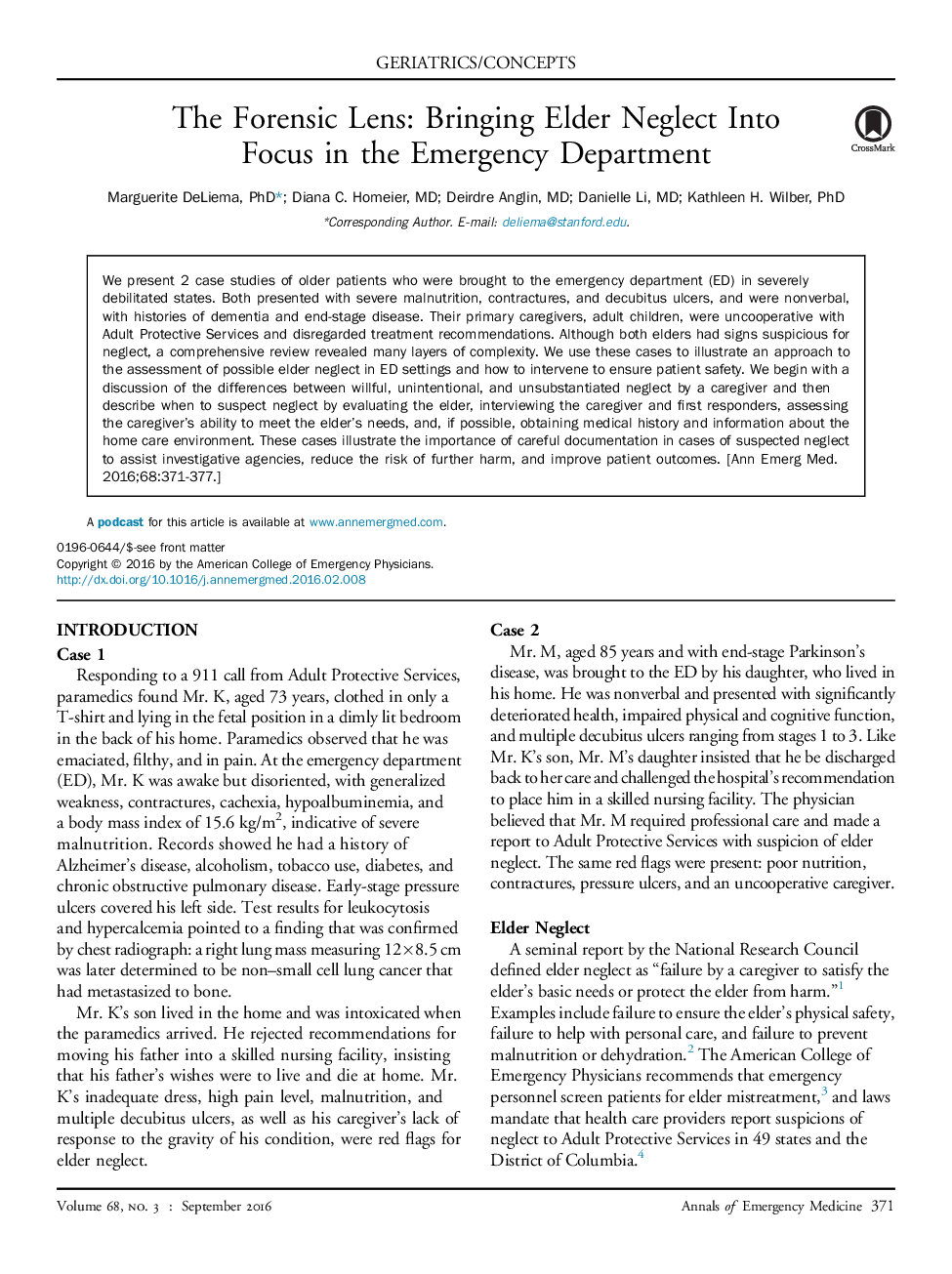| Article ID | Journal | Published Year | Pages | File Type |
|---|---|---|---|---|
| 3228197 | Annals of Emergency Medicine | 2016 | 7 Pages |
We present 2 case studies of older patients who were brought to the emergency department (ED) in severely debilitated states. Both presented with severe malnutrition, contractures, and decubitus ulcers, and were nonverbal, with histories of dementia and end-stage disease. Their primary caregivers, adult children, were uncooperative with Adult Protective Services and disregarded treatment recommendations. Although both elders had signs suspicious for neglect, a comprehensive review revealed many layers of complexity. We use these cases to illustrate an approach to the assessment of possible elder neglect in ED settings and how to intervene to ensure patient safety. We begin with a discussion of the differences between willful, unintentional, and unsubstantiated neglect by a caregiver and then describe when to suspect neglect by evaluating the elder, interviewing the caregiver and first responders, assessing the caregiver’s ability to meet the elder’s needs, and, if possible, obtaining medical history and information about the home care environment. These cases illustrate the importance of careful documentation in cases of suspected neglect to assist investigative agencies, reduce the risk of further harm, and improve patient outcomes.
